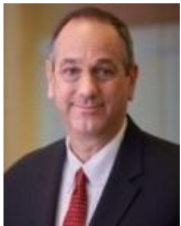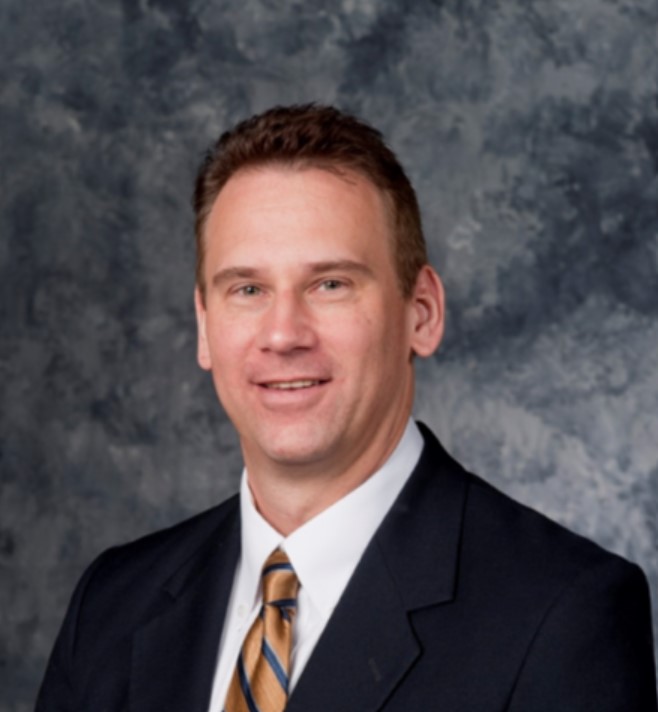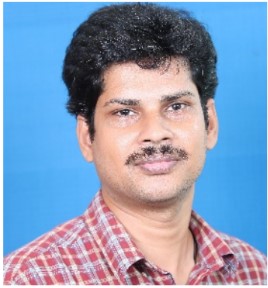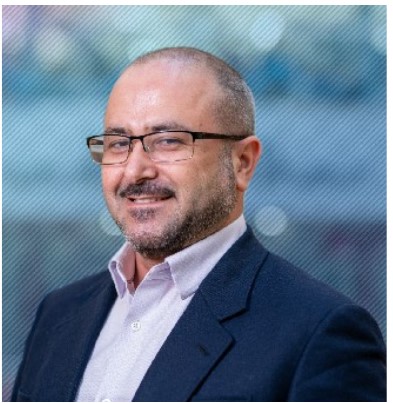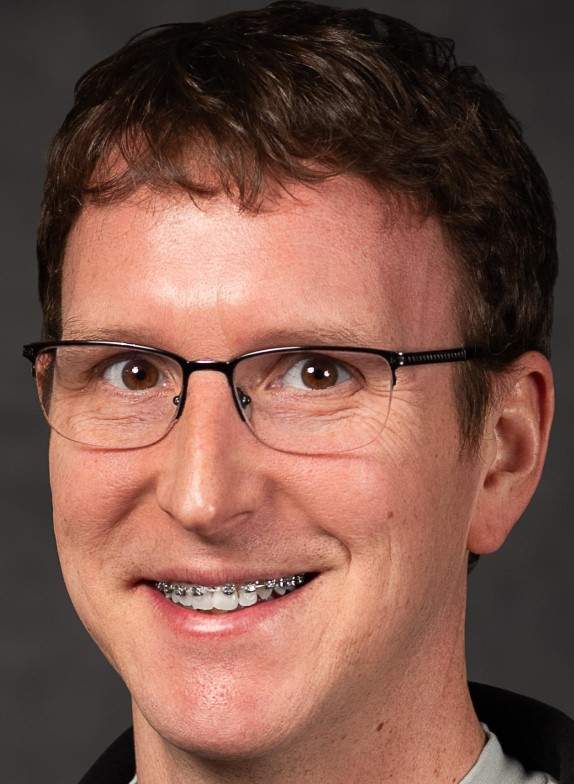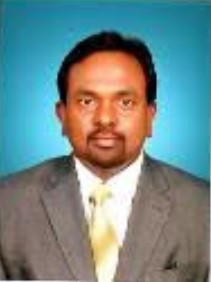May 2025 IEEE Buffalo NY Joint Chapters Meeting
Join the IEEE Buffalo NY Section.
The IEEE Buffalo NY Section Joint Chapter Meeting is
May 10th, 2025
Don’t miss this excellent opportunity to meet and network with people from all engineering disciplines and learn more about the activities of the different IEEE Society Chapters in the Buffalo area.
The IEEE Buffalo Joint Chapters Meeting (JCM) features:
- 6 technical presentations from IEEE Society Chapters
- Student poster session with Best Poster award.
- Professional networking with short coffee and refreshment breaks,
- Vector Network Analyzer Technical demonstration by Copper Mountain Technologies (Rick Hollowell)
Registration is free/no charge, but is required.
0.2 CEU / 2.0 PDH credits shall be available for this event, provided that all technical presentations are attended, and completion of a short questionnaire and attendance form
Optional dinner at Pearl Street Grill & Brewery, after JCM. The Buffalo Section will cover the cost for IEEE Professional Members and elected Student Branch Officers.
See event flyer in the event media section for more details and student poster submission information.
Please come back to this site for updates on the JCM presentations.
Date and Time
Location
Hosts
Registration
-
 Add Event to Calendar
Add Event to Calendar
- SUNY Buffalo State University
- 1300 Elmwood Avenue
- Buffalo, New York
- United States 14222
- Building: Technology Building
- Room Number: 160
- Click here for Map
- Contact Event Hosts
-
Coffee and refreshments courtesy of Rick Hollowell with Copper Mountain Technologies.
- Co-sponsored by Copper Mountain Technologies
Speakers
Rick Hollowell of Copper Mountain Technologies
Capabilities of a Vector Network Analyzer
Featured Speaker:
Please Join us as Mr. Hollowell provides a technical demonstration on the capabilities of Vector Network Analyzers.
Biography:
Mr. Rick Hollowell is the Director of Sales for the U.S. and Canada at Copper Mountain Technologies. He brings over 30 years of experience in the microwave, RF systems, and test and measurement industries. During his career, he has held engineering, operations, and business development positions at various companies, including Macom, Radio Waves, Cobham, and Continental Resources. Since joining Copper
Mountain in 2015, he has been responsible for leading technical training and conducting Vector Network Analyzers demonstrations across academic and industrial sectors.
John Schaff of AP/MTT
Space Weather Effects on Satellites and Spacecraft
Space weather, in its various forms, is a significantly different condition than what we are accustomed to here on Earth. When it comes to operating in earth orbit or the orbit of other planets the effects of space weather must be considered for the survival of electronic systems. Space weather consists of thermal, vacuum and radiation conditions that can cause considerable design challenges for spacecraft subsystems. This talk will describe those conditions and what is typically done to mitigate the effects to ensure long term survivability on orbit.
Biography:
Mr. John Schaf has been in the aerospace industry for 37 years and for most of that time has been involved in advanced computing for satellite, spacecraft, missiles, and Guidance Navigation and Control (GNC). This includes designing and testing microelectronic circuits to survive the terrors of natural and man made radiation environments in space. He received his BS and MS all in electrical engineering from University at Buffalo and has held positions at various aerospace firms across the United States. Mr. Schaf has been with Moog Inc. for the last 32 years.
Bibhu Sahuu of Circuits & Systems
Analog and Mixed Signal Circuits and Systems for Emerging Applications
The rapid advancements in computing, communication, and networking technologies facilitated by the feature size scaling of transistors, have not only made connected devices, i.e., Internet-of- Things (IoT), possible but also resulted in volumes of data being generated by these devices, which has ledto rapid advancements in the area of big-data analytics thereby ushering a new era of artificial intelligence and machine learning hardware to make smart connected devices.
We have reached an inflection point in the design of such smart connected devices: the machine learning hardware designer has to look beyond conventional digital computing blocks and possibly revive analog computing. This has led to a new generation of analog designers who are combining conventional analog circuits with approximate computing techniques to build energy-efficient systems. On the other hand, the power of Digital Signal Processing (DSP) techniques can continue to be harnessed to enhance the performance of analog circuits by orders of magnitude.
This talk will discuss a couple of such DSP techniques like dithering and generalized sampling to enhance analog circuit performance by a few orders. A couple of FPGA-based Convolutional Neural Network (CNN) architectures for energy-efficient inference engines will be presented along with Spiking Neural Network (SNN) architecture realized using conventional analog circuits. The talk will conclude with some classical analog hardware for emulating quantum algorithms, like Grover’s search algorithm, for quantum computing systems.
Biography:
Bibhu Datta Sahoo joined the faculty of the UB Department of Electrical Engineering as Professor in Fall 2023. He received the B.Tech. degree in Electrical Engineering from the Indian Institute of Technology (IIT), Kharagpur, India, in 1998, the M.S.E.E. degree from the University of Minnesota, Minneapolis, MN, USA, in 2000, and the Ph.D. E.E. Degree from the University of California, Los Angeles in 2009. From 2000 to 2006, he was with DSP Microelectronics Group, Broadcom Corporation, Irvine, CA, where he designed analog and digital integrated circuits for signal-processing applications. From December 2008 to February 2010, he was with Maxlinear Inc., Carlsbad, CA, where he was involved in designing RF Integrated Circuits for CMOS TV tuners. He has been a faculty at IIT Kharagpur, India for 6 years and Amrita University, India for 5 years. His research interests include mixed signal circuit design, analog computing, and machine learning hardware. He received the 2008 Analog Devices Outstanding Student Designer Award and was the co-recipient of the 2013 CICC Best Paper Award. He was the Associate Editor of IEEE Transactions on Circuits and Systems-II from Aug. 2014 to Dec. 2015. Since Aug. 2019 he has been the Associate Editor of IEEE Open Journal of Circuits and Systems. He is the IEEE CASS Distinguished Lecturer for the term 2025-2026.
Mustafa Demir of IEEE Buffalo Section Membership Development Chair
Modeling Team Interaction and Decision-Making in Agile Human-Machine Teams
Modeling Team Interaction and Decision-Making in Agile Human-Machine Teams: A Quantum and Dynamical Systems Approach to Characterizing Uncertainty [1]
In this presentation, Dr. Mustafa Demir defines team agility as a function of exploration and exploitation of team coordination dynamics in the context of human-machine teaming (HMT). Using these concepts, he examined interactive decision-making as well as communication among the team members in a dynamic simulated remotely piloted aircraft task environment. The study applied two approaches: the principles of quantum cognition to analyze decision-making processes at the intersection of teamwork and taskwork, focusing on the effects of ontic uncertainty among team members; and nonlinear dynamical systems modeling to capture epistemic uncertainty in teamwork. The experiment featured three conditions based on the pilot role: synthetic (pilot role played by a synthetic agent), control (pilot role randomly assigned to a participant), and experimenter (pilot role assigned to an expert using a role-specific coordination script). The findings indicate that teams in the experimenter condition, when encountering targets, were more likely to explore alternatives through team coordination rather than exploiting existing strategies, which might not be optimal for the situation, especially during the decision-making process. In contrast, teams in the control and synthetic conditions leaned more toward exploiting existing strategies rather than exploring new ones. Dr. Demir and his team in the study consider this tendency towards exploration as a sign of agility in teamwork.
Biography:
Dr. Mustafa Demir is an associate research scientist at the Biodesign Institute, Center for Applied Structural Discovery, a faculty associate teaching statistics at the Ira A. Fulton Schools of Engineering at Arizona State University (ASU) in Tempe, Arizona, and a scientist at the Wm Michael Barnes '64 Department of Industrial and Systems Engineering at Texas A&M University. Dr. Demir received his Ph.D. in Simulation, Modeling, and Applied Cognitive Science, focusing on team coordination dynamics and effectiveness in human-machine teaming (HMT) from ASU in the Spring of 2017. For the last 12 years, his research has been grounded in a human-systems engineering approach, and he seeks to optimize sociotechnical systems by understanding and developing more effective human-centered collaborative Artificial Intelligence-powered systems. Since 2012, Dr. Demir has published approximately 100 academic works in various journals and conference proceedings across social and engineering sciences, achieving an h-index of 27. His scientific interests include HMT, advanced statistical modeling, dynamical systems modeling, team cognition, and operations research. Additionally, Dr. Demir has been a Senior Member of The Institute of Electrical and Electronics Engineers (IEEE) since 2015.
Josh Joseph of Power & Energy
High Impedance Fault Detection using Wavelet Transforms with Machine Learning Techniques
High impedance faults (HIFs), which may cause physical and material damage, are not detectable with conventional overcurrent protection schemes in distribution networks. Wavelet transforms (WT) are used to classify HIFs within the waveform’s unique characteristic distortions which are inherent when downed overhead conductors contact different types of material (i.e. soil, sand, pavement). Given the irregular waveform patterns of HIFs, a fault portfolio has been developed by modeling these faults using RTDS and PSCAD based on real-world data. This method pairs WTs with machine learning in MATLAB by extracting the periodic waveform characteristics and trending the information in the fault portfolio from the data to classify and predict HIFs, decipher between HIFs and load, and detect DC-side arcing distributed generation (DG) sites.
Biography:
Josh Joseph received his BS and MS degrees in Electrical Engineering from University at Buffalo, The State University of New York. He is currently working towards his PhD where his research includes high impedance fault detection using wavelet transforms with machine learning techniques. He is a member of the IEEE and a registered profession engineer in the State of New York. He has been employed by National Grid since 2018 where’s served as Senior Commissioning Engineer and Senior Protection Operations Supervisor. Josh is presently a Lead Engineer in PTO O&M Services where he develops standard test templates, creates and maintains procedures and standards, and provides technical expertise to support National Grid protection and telecommunications operations from an engineering perspective.
Sam Kassey of Photonics
Advances in Tapered & Lensed Optical Fibers Technology for Waveguide, Lasers and Fiber Sensors
Tapered and lensed optical fibers are rapidly becoming the method of choice for interfacing optical fiber to active devices, waveguides, optical fiber sensors, and VCSEL. Optical fiber sensors based on tapered optical fiber (TOF) structure have attracted a considerable amount of attention from researchers due to the advantages of simple fabrication, high stability, and diverse structures, and have great potential for applications in many fields such as physics, chemistry, and biology. Compared with conventional optical fibers, TOF with their unique structural characteristics significantly improves the sensitivity and response speed of fiber-optic sensors and broadens the application range. Lensing Tapered technology provides highly efficient couplings while consuming a fraction of the space and costs of bulk optics alternatives. During the past one decade, there has been a phenomenal amount of research and development activities in the field of Lensed/Tapered Fibers throughout the world and this is because of its very important applications in laser diode chip and waveguide, nano technology packaging. This talk tries to convey a large number of important characteristics of lensed/tapered fibers and concepts associated with different types of optical fiber lenses. This talk would be useful for research students following photonics courses at undergraduate, graduate and Post Doc levels and opto-electronics professionals wanting a quick guide in the field. Tapered lensed fibers are not associated with any external lens but create lens within the optical fiber as per the requirement.
Biography:
Dr. Kassey is currently Chief Technical Officer & Senior Vice President and co-founder at LaseOptics Corporation. He has PhD in Fiber Optics Engineering from Corllins University USA, 2009. Prior thereto, in 1995 obtained his MS Physics with Fiber Optics & Optical Communications as specialization from Jawaharlal Nehru Technological University, India. Additionally received Honorary Doctorate from TBTS-ECU for his proven leadership skills and outstanding contribution in to several fields in the year 2002.
He has more than 29 years’ experience as a leading international scientist/researcher in the fiber optics engineering and has published numerous scientific articles on his original research work. He has started his carrier as scientist in Government of India 1995, and migrated to united states in 1998 as visiting scientist to University of Utah. He has worked in different capacities in various companies. He was awarded in the year 2000 as outstanding scientist O-1 status from INS. Dr. Kassey is Senior Member of IEEE, and Chair of Photonics Chapter of Buffalo section, Senior Member of OPTICA (formerly Optical Society of America). SPIE member. Recipient of IEEE Region 1 Award in Technology Innovation 2024.
His current research interests are lensed & tapered fibers manufacturing and integration and coupling with high power semiconductor laser diodes and waveguides and biomedical devices and design innovation
Huamin Li of Nano Technology
Interfacial Design of Two-dimensional Nanoelectronics
Since the advent of graphene, the Nobel-winning “magic material”, two-dimensional (2D) layered crystals have emerged as promising candidates for energy-efficient nanoelectronics, owing to their unique charge transport properties. From an interfacial design perspective, I will
review our recent research on 2D semiconducting MoS 2 , spanning material synthesis, structural engineering, and device innovation. Our work has unveiled novel charge transport phenomena and electronic interaction mechanisms, including band-to-band Zener tunneling, cold-source
Dirac electron injection, tensile strain effects, and electrodynamic coupling, across critical interfaces such as 2D/dielectric, 2D/metal, 2D/semiconductor, and 2D/substrate. These findings underscore the potential of 2D materials, even at sub-nanometer thicknesses, to extend
Moore’s law through advanced interfacial engineering.
Biography:
Huamin Li earned his Ph.D. from Sungkyunkwan University, Korea, and conducted postdoctoral research at the University of Notre Dame, USA. He joined the University at Buffalo (UB) in 2017, where he leads research on 2D materials and their applications in nanoelectronics (https://ligroup.eng.buffalo.edu/). Dr. Li serves as an Editor for IEEE Access, Nano Express, Materials Research Letters, and Moore and More. Additionally, he is a Technical Committee Member, Region 1 Young Professionals (YP) Representative, and YP Ambassador for the IEEE Nanotechnology Council (NTC). His contributions have been recognized with numerous accolades, including the NSF CAREER Award; Young Investigator, Exceptional Scholar, and Early Career Research Awards from UB; and the IEEE Region 1 YP Award.
Agenda
IEEE Buffalo Section Joint Chapters Meeting Agenda
1:30 – 6:00 PM, Registration
2:00 – 2:10 PM, Opening remarks
2:10 - 2:30, Technical Demonstration by Copper Mountain, "Capabilities of a Vector Network Analyzer" (Rick Hollowell)
2:30 – 4:50 PM Chapter Technical Presentations (Technology Building, Room 160)
- 2:30 - 2:50, Session 1: John Schaff, Space Weather Effects on Satellites and Spacecraft"
- 2:50 – 3:00 PM Short Coffee & Refreshment Break
- 3:00 - 3:20, Session 2: Bihbu Sahoo, Analog and Mixed Signal Circuits and Systems for Emerging Applications
- 3:20 - 3:40, Session 3: Mustafa Demir, Modeling Team Interaction and Decision-Making in Agile Human-Machine Teams: A Quantum and Dynamical Systems Approach to Characterizing Uncertainty [1]
- 3:40 - 4:00, Session 4: Joshua Joseph, High Impedance Fault Detection using Wavelet Transforms with Machine Learning Techniques
- 4:00 – 4:10 PM Short Coffee & Refreshment Break
- 4:10 - 4:30, Session 5: Samuel Kassey, Advances in Tapered & Lensed Optical Fibers Technology for Waveguide, Lasers and Fiber Sensors
- 4:30 - 4:50, Session 6: Huamin Li, Interfacial Design of Two-dimensional Nanoelectronics
5:00 - 6:00 PM Student Poster Session. An award ($200.00) will be presented at the conclusion of the session. If posters fall into distinct categories (e.g., undergraduate vs graduate), awards may be split accordingly.
7:00 - 9:00 PM, Optional dinner at Pearl Street Grill & Brewery. The Buffalo Section will cover the cost for IEEE Professional Members and elected Student Branch Officers.
Pearl Street Gril & Brewery, 76 Pearl St. Buffalo, NY 14202
Media
| Event Flyer | Details to the May 10th Buffalo Section Joint Chapters Meeting | 3.91 MiB |


